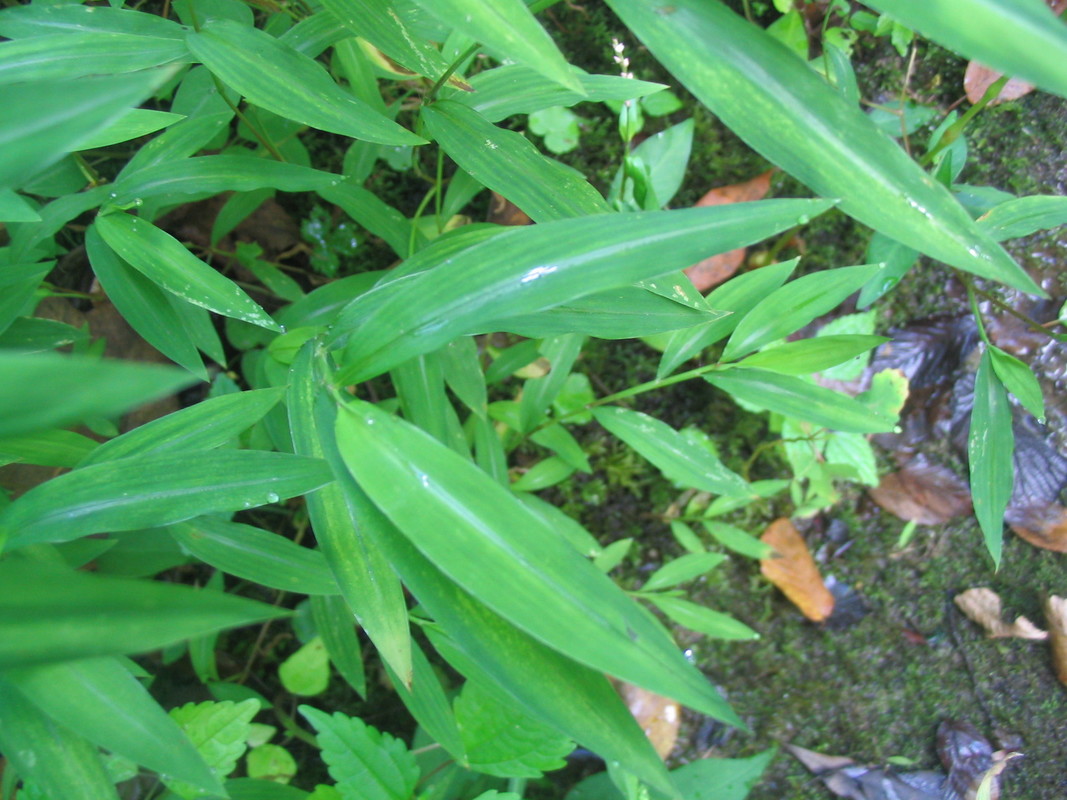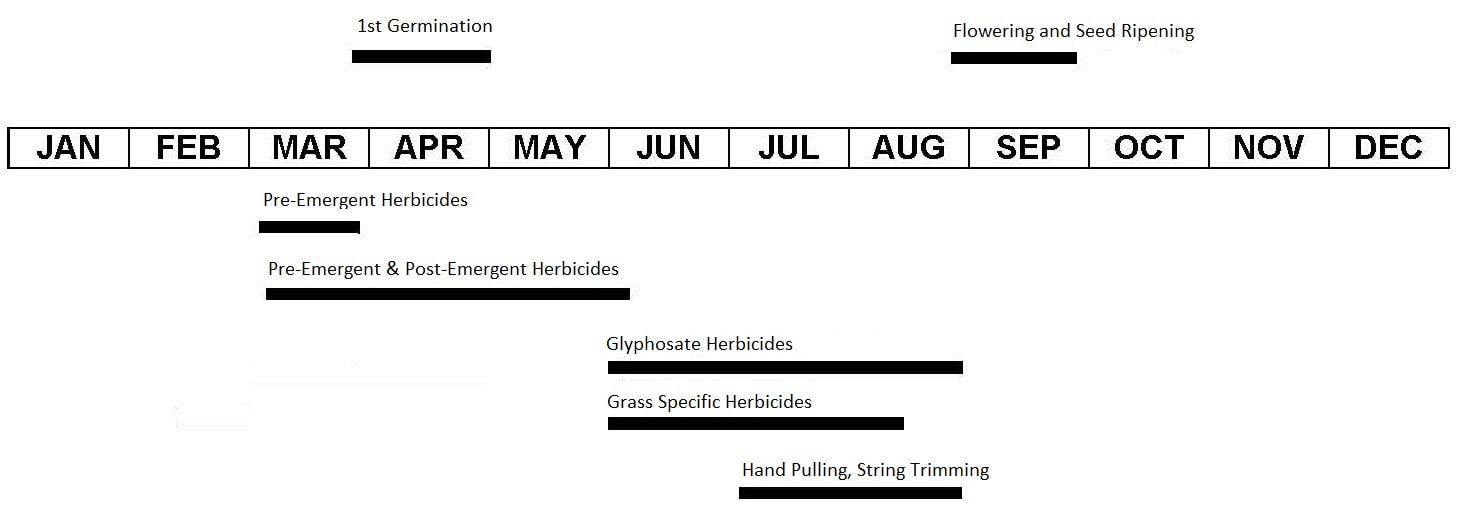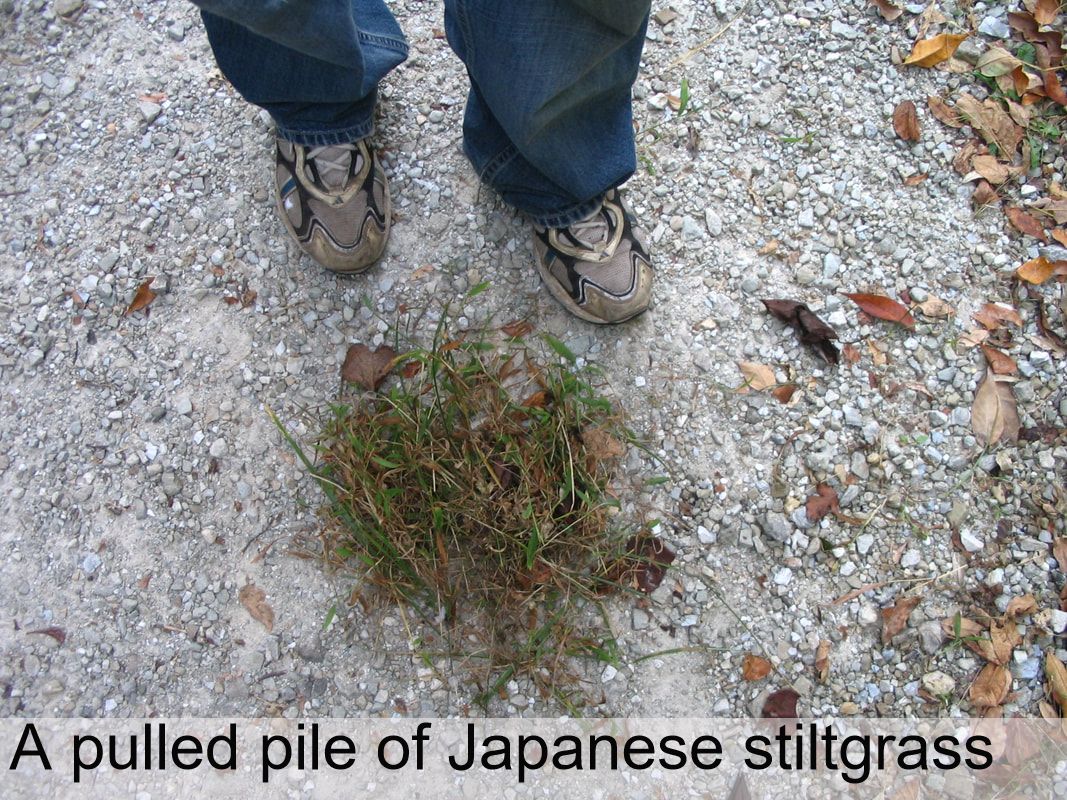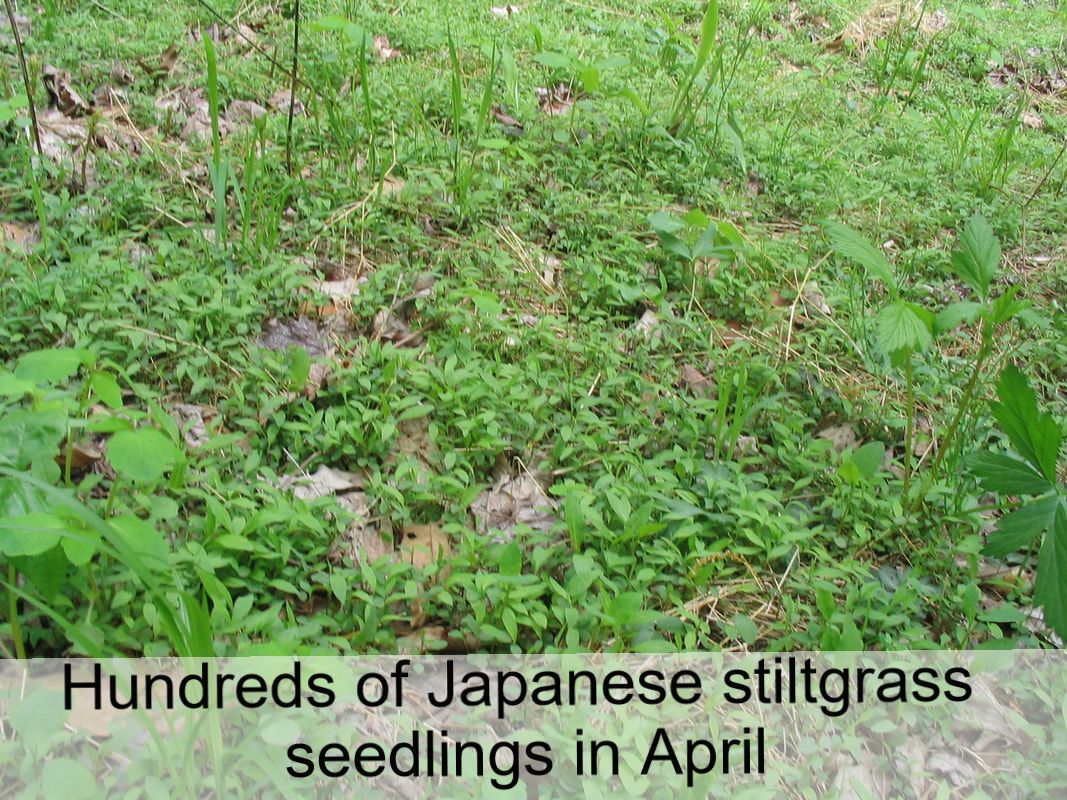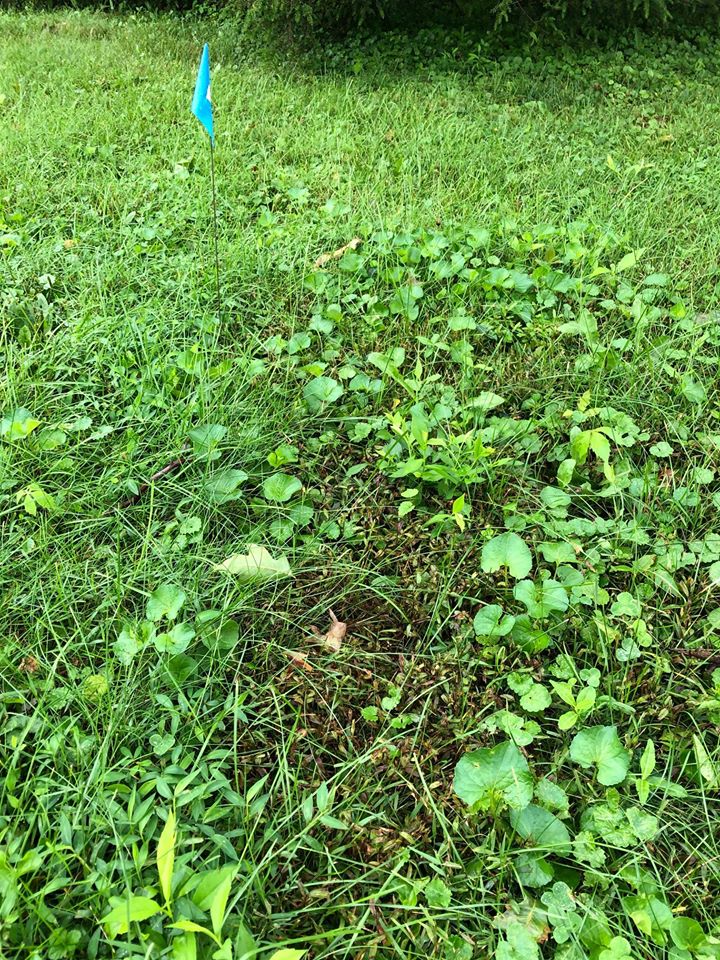|
Note - all herbicides should be applied according to label directions, and care should be taken to minimize harm to other plant species in the area. Japanese stiltgrass thrives on bare ground, so keeping other plants in place is important. Establishing perennial cover can help keep stiltgrass from re-invading once it is controlled.
Japanese Stiltgrass Control Calendar
Controlling Small Infestations
Small infestations should be hand pulled. The plants should be pulled from the roots before the plant starts flowering. As long as there are no flowers or fruits on the plant, the pulled individuals can be dropped on the ground rather than bagged. If there are flowers or fruits (which usually starts in late August), the plants should be bagged and disposed of. String trimming can be effective at controlling small areas of stiltgrass, but only if each plant is cut flush with the ground, which will result in ground disturbance. It is very important not to string trim after flowers and fruits are present, as this will just spread the seeds.
|
|
Post-Emergent Methods of Control
Later in the season (June-August) it is best to use an herbicide with no soil activity to minimize non-target damage. Glyphosate (Drexel Imitator Plus or the water-safe CattPlex) and the grass specific herbicide clethodim (Clethodim 2EC) are available locally at Rural King. Clethodim acts slowly (two to four weeks), but at low use rates (0.5% - 0.66%) clethodim will kill annual grasses and only temporarily effect native perennial grasses. Glyphosate will act quickly (one to two weeks) but is non-selective (will kill all green plants it contacts). A very low use rate (0.5%) of glyphosate can be used, which will only temporarily effect other plant species, minimizing damage to non-target species.
|
Controlling Stiltgrass in Turf Grass
Killing Japanese stiltgrass in turf presents a particular challenge because most chemical methods, even a grass-specific herbicide like Clethodim, will kill turf grass, leaving large dead areas in a lawn. A good method for killing stiltgrass in turf is to use Fenoxaprop-p-ethyl, an herbicide that will kill Japanese stiltgrass but NOT kill turf grass. This chemical is sold as Acclaim and should be applied at 0.4 oz./gallon plus 0.5% surfactant. This mix was tested on five Bloomington-area lawns in July 2020 with consistent success. Stiltgrass died after 2-3 weeks, and turf grass was left unaffected.
In the picture to the left, the blue flag marks the border between an area sprayed with Acclaim to the right and the unsprayed area to the left. Note the green and healthy stiltgrass on the left, and the curled brown leaves of stiltgrass on the right. This photo was taken three weeks after spraying. Note that often a second spraying is necessary because small plants hidden under other leaves may emerge after the first spray. |
